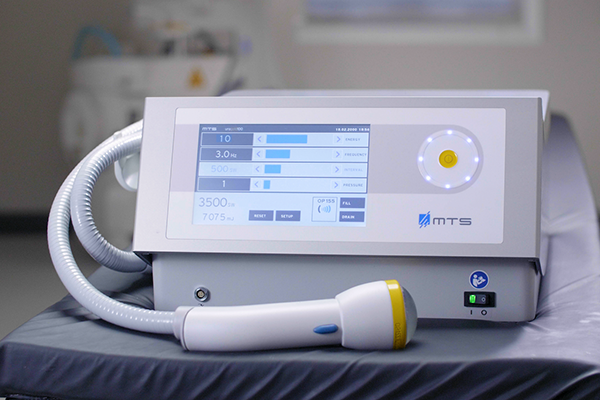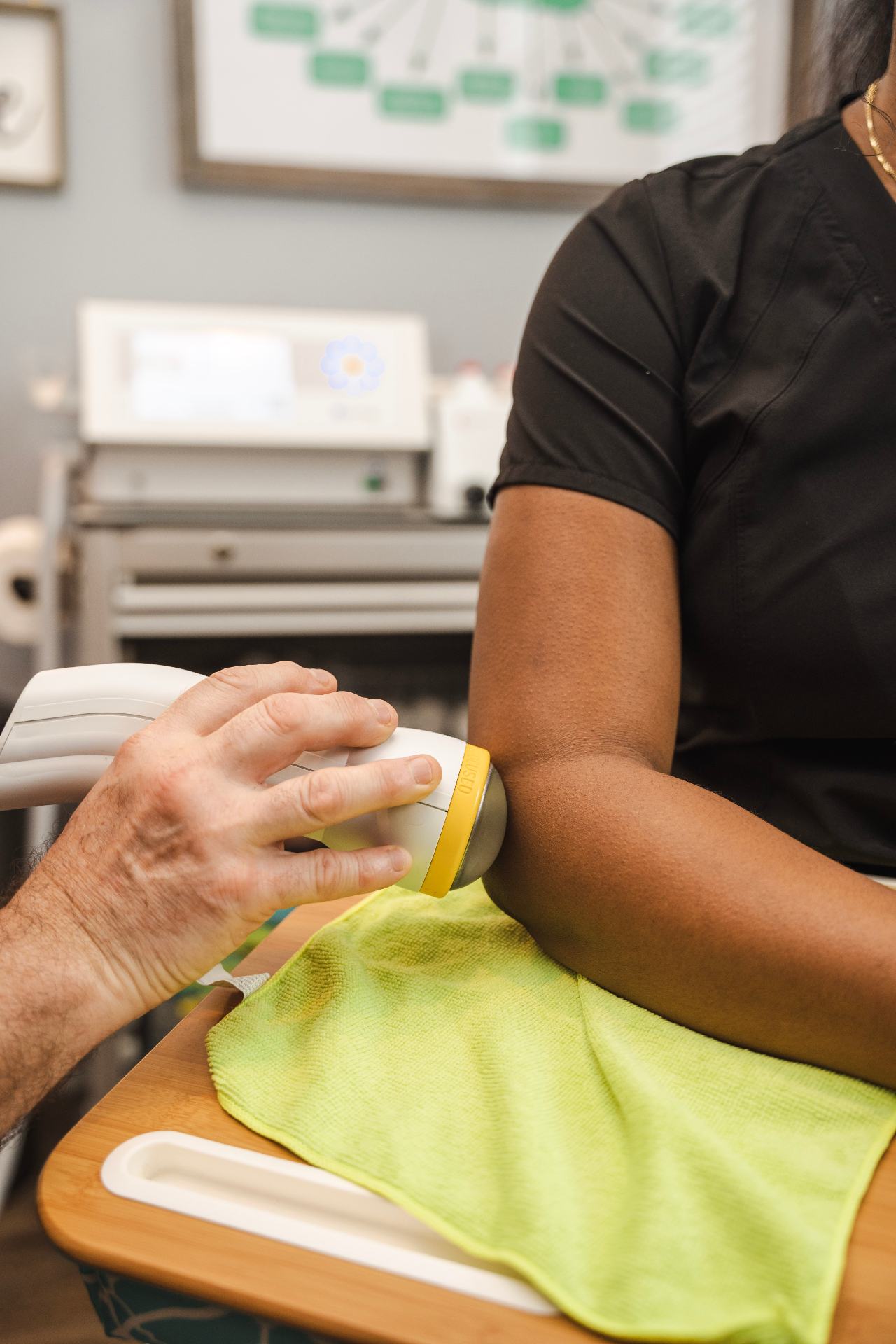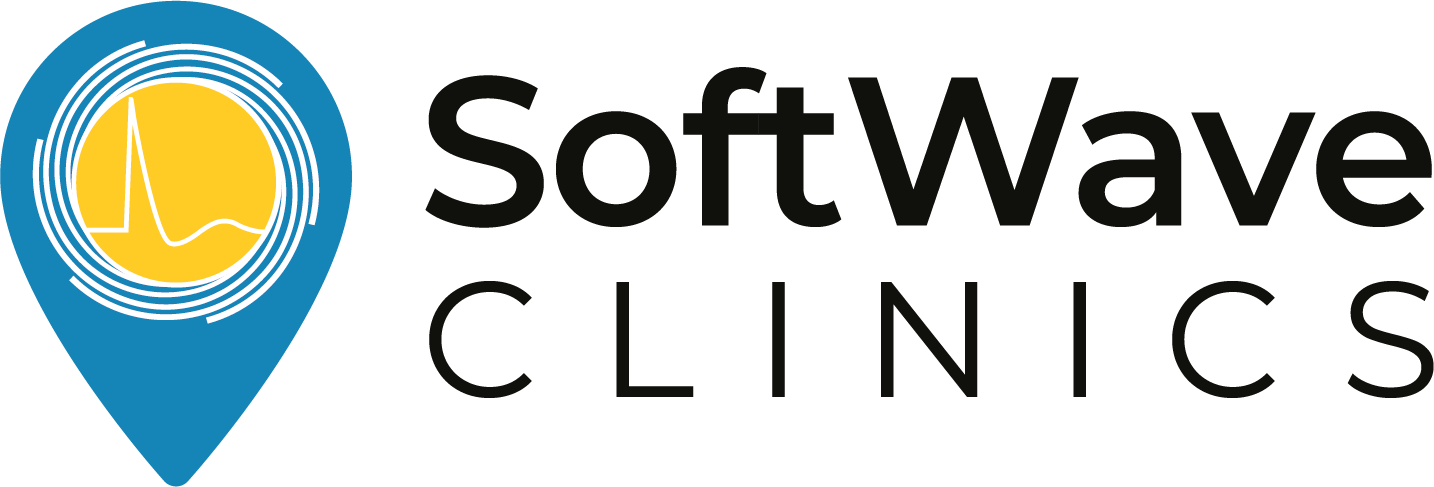Myofascial pain, a common condition marked by chronic pain and discomfort in the muscles and surrounding fascia, can affect individuals of varying ages and lifestyles. Regardless of whether you’re an athlete, an office worker, or a retiree, myofascial pain can significantly hinder your everyday life. Fortunately, SoftWave therapy, using the principles of shockwave technology, has emerged as a promising treatment for this debilitating condition. This non-invasive method treats the root causes of pain, offering an alternative to expensive surgical procedures or prescription medications with potential side effects.
In this blog post, we will delve into:
- Causes of Myofascial Pain
- Benefits of Shockwave Therapy for Myofascial Pain
- How Shockwave Therapy Works
- What is a Shockwave?
- How do Shockwaves Treat Myofascial Pain?
- Types of Shockwave Therapy
- Who is a Good Candidate for Shockwave Therapy?
- The Shockwave Therapy Procedure
- Shockwave Therapy Side Effects
- The Best Shockwave Therapy for Myofascial Pain
Causes of Myofascial Pain

Myofascial pain refers to the discomfort and pain that arises from trigger points in the muscles or the fascia, which is the connective tissue surrounding the muscles. The causes of myofascial pain can vary, and here are five common factors:
- Muscle Overuse or Injury: Excessive use or repetitive motions strain muscles, leading to trigger point development. Acute injuries like strains or tears can also contribute to trigger points.
- Poor Posture and Ergonomics: Improper posture and prolonged positions create muscle imbalances and stress on specific groups, resulting in trigger points and myofascial pain.
- Emotional Stress and Tension: Emotional stress, anxiety, and tension manifest as muscle tightness. Chronic stress causes sustained muscle contractions and trigger point formation, leading to myofascial pain.
- Lack of Physical Activity: Sedentary lifestyles or minimal physical activity weaken muscles, reduce blood flow, and limit range of motion. These factors increase the likelihood of trigger point formation and myofascial pain.
- Systemic Conditions or Diseases: Some systemic conditions or diseases result in myofascial pain as a secondary symptom. Fibromyalgia, rheumatoid arthritis, hypothyroidism, and chronic fatigue syndrome are examples that contribute to myofascial pain.
It’s important to note that these are just some of the most common causes of myofascial pain. If you are experiencing myofascial pain, you can learn if your condition is suitable for treatment and try shockwave therapy with our New Patient Special.
Considering Shockwave Therapy?
Try SoftWave Therapy for just $69. Non-invasive healing that reaches deeper.

Benefits of Shockwave Therapy for Myofascial Pain
Shockwave therapy is an emerging non-surgical treatment option for myofascial pain that offers several potential benefits:
Rapid Healing: Shockwave therapy promotes the body’s natural healing processes, fostering faster repair of the damaged muscles and relieving persistent pain.
Reduced Dependence on Medications: Unlike traditional treatments for myofascial pain that may involve medications with potential side effects, shockwave therapy provides a drug-free alternative.
Improved Quality of Life: By reducing pain and enhancing mobility, shockwave therapy helps patients return to their regular activities, thereby improving their quality of life.
Safe and Non-Invasive: Unlike surgical treatments, shockwave therapy is safe and non-invasive, presenting a lower risk of complications.
Overall, shockwave therapy is a promising treatment for those suffering from myofascial pain.
How Shockwave Therapy Works
Shockwave therapy is a non-surgical treatment that utilizes high-energy sound waves to initiate the body’s natural healing response. Here’s how it works:
What is a Shockwave?
Shockwaves are rapid pressure pulses that comprise a high-pressure surge followed by a comparatively lower-pressure trough. These phenomena can be produced by various sources, such as supersonic jets, lightning, or seismic activities.
How do Shockwaves Treat Myofascial Pain?
Shockwave therapy, utilizing a specific device, creates and directs shockwaves towards the afflicted muscles. This process sparks healing at the cellular level, enhances blood supply to the area, and initiates the body’s inherent healing mechanisms.
Types of Shockwave Therapy
Several types of shockwave therapy are accessible for treating conditions like myofascial pain, including radial shockwave therapy (RSWT), focused shockwave therapy (FSWT), acoustic wave therapy (AWT), and broad-focused shockwave therapy.
Radial Shockwave Therapy (RSWT) employs a hand-held device to deliver pressure waves to the skin’s surface. This modality is often used for conditions like plantar fasciitis, Achilles tendinopathy, and tennis elbow. Nevertheless, it may not be effective for deeper tissue injuries, and patients might require multiple treatment sessions.
Focused Shockwave Therapy (FSWT) directs high-intensity shockwaves right to the area of concern. This therapy is commonly used for persistent conditions, such as bone fractures that heal slowly. Some patients, however, may find it uncomfortable, necessitating adjustments to the intensity based on individual tolerances.
Acoustic Wave Therapy (AWT) uses a device that releases low-intensity shockwaves to the affected region. This therapy is typically used to enhance blood flow, alleviate pain and inflammation, and stimulate tissue healing. It’s frequently used to treat conditions like erectile dysfunction and cellulite, but the low-intensity shockwaves may not effectively address certain conditions.
broad-focused Shockwave Therapy, such as the FDA-cleared SoftWave, releases high-intensity shockwaves that penetrate a larger and deeper tissue area compared to focused or radial waves. This type of shockwave therapy can address the same conditions as traditional focused shockwave therapy and can offer enhanced relief for muscle issues or larger joint problems, such as the shoulder or hip. broad-focused shockwave therapy may also require fewer sessions than radial or focused shockwave treatments.Who-is-a-Good-Candidate-for-Shockwave-Therapy?
Who is a Good Candidate for Shockwave Therapy?

Several factors may make an individual a good candidate for shockwave therapy. These include:
- Patients with chronic myofascial pain
- Patients who haven’t found success with other therapies
- Patients who prefer non-invasive treatment options
Patients dealing with chronic myofascial pain might benefit significantly from shockwave therapy. If traditional treatments such as medication, physical therapy, or exercise modifications haven’t provided substantial relief, shockwave therapy could be an appealing alternative.
Additionally, patients who have tried various therapies with limited success might benefit from shockwave therapy for their myofascial pain. This could include individuals who have undergone numerous conservative treatment options without achieving sufficient pain relief.
Shockwave therapy is also a beneficial choice for patients who prefer non-invasive treatments, as it provides a non-surgical method that doesn’t require incisions or anesthesia. This makes it an attractive option for those wanting to avoid invasive procedures like surgery.
Considering Shockwave Therapy?
Try SoftWave Therapy for just $69. Non-invasive healing that reaches deeper.

The Shockwave Therapy Procedure
It’s vital for patients considering shockwave therapy for their myofascial pain to understand what to expect during the procedure. The process includes:
- Preparation: Prior to the procedure, ultrasound gel is applied to the affected area. The shockwave device is then positioned gently on the skin.
- During the Procedure: As shockwaves are delivered to the affected muscles, patients may experience a mild tapping or pulsing sensation. While some may experience minor discomfort, anesthesia or numbing agents are generally unnecessary. A good rapport between the patient and provider can help pinpoint treatment areas and monitor progress effectively.
- After the Procedure: The procedure usually lasts between 10-15 minutes, after which patients can typically resume their normal activities, with no recovery downtime necessary. Some healthcare professionals may advise against high-impact movements or exercising for 24-48 hours.
Shockwave Therapy Side Effects
Shockwave therapy is generally considered safe with minimal side effects. However, like any medical procedure, there is a minor risk of side effects. The most commonly reported side effects of shockwave therapy for myofascial pain include:
- Pain or discomfort during or after treatment
- Swelling or bruising
- Skin redness or irritation
- Numbness or tingling
These side effects are generally mild and temporary. Most patients can return to their regular activities immediately after the procedure.
SoftWave, an FDA-approved broad-focused shockwave therapy, is a safe and effective treatment for myofascial pain. Side effects from SoftWave are minimal and typically resolve within one to two days. It does not cause significant bruising or swelling, and any minor redness or soreness usually subsides quickly.
The Best Shockwave Therapy for Myofascial Pain
Are you looking for safe, reliable, and effective relief from myofascial pain?
SoftWave therapy is FDA-cleared, patented, and nationally recognized for its leading tissue regeneration technology. Unlike other types of high-energy shockwave treatments, SoftWave is the only shockwave therapy on the market that uses true broad-focused shock waves that treat larger and deeper areas of tissue.
Thousands of patients have experienced the benefits of SoftWave for myofascial pain, including:
- Little to no side effects
- Short treatment time
- Quick recovery
- Long-lasting results
Find a SoftWave Therapy provider near you or learn more about SoftWave and whether or not you’re eligible for full treatment today!
New Patient Special
Try SoftWave for just $69 at a clinic near you and learn if you’re a candidate for full treatment




